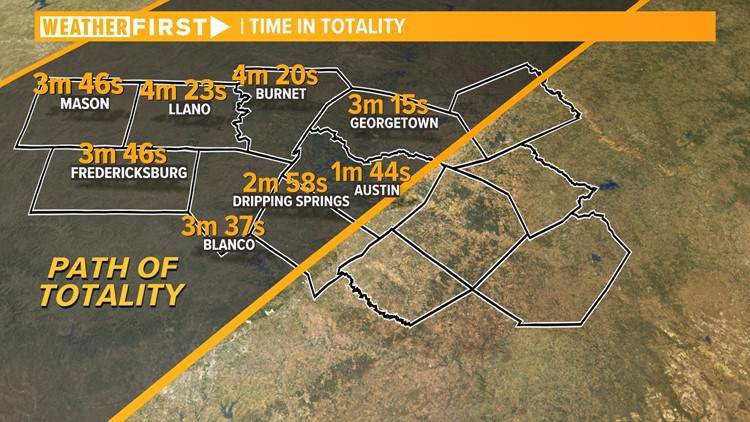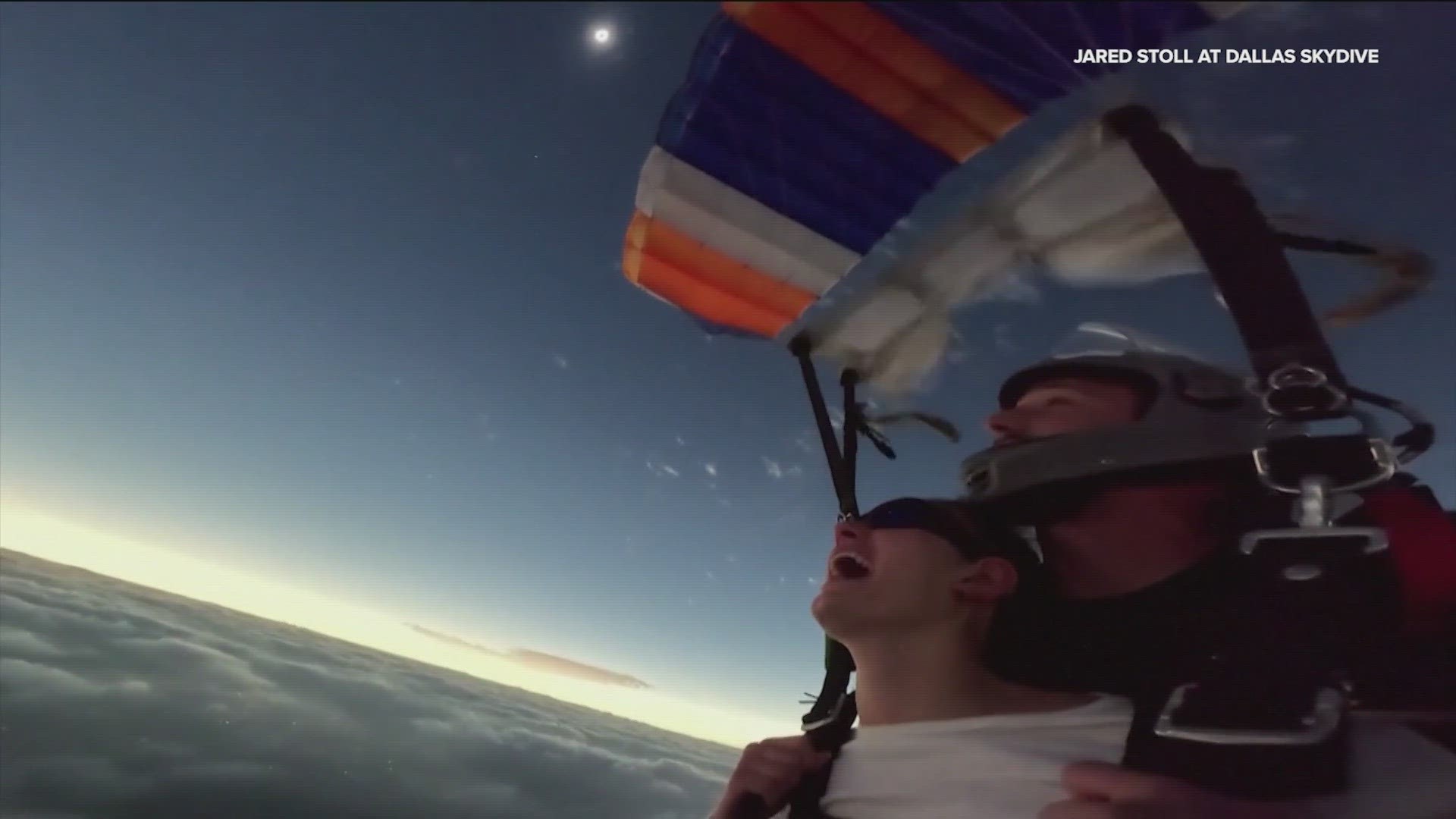AUSTIN, Texas — Central Texas was lucky enough to experience a partial solar eclipse on Oct. 14, 2023. We're now looking ahead to a much rarer celestial event, with a total solar eclipse set to pass over Austin and much of Central Texas on April 8.
Austin will be in the path of totality, meaning that the shadow of the moon – referred to as the umbra – will pass over directly. In Downtown Austin, there will be approximately 1 minute and 50 seconds of totality. During this less than 2-minute stretch, the moon will completely block out the sun, allowing Central Texans to get a very rare glimpse at the corona of the sun.
Ahead of this exciting event, there are a few things you'll want to know to enjoy the solar eclipse to fullest extent. Let's break everything down so you know exactly what to expect.
What is a total solar eclipse?
A total solar eclipse takes place when the moon completely blocks out the sun. When this happens, just like how a tree casts a shadow on the ground in the afternoon, the moon will cast a shadow on the earth.
This shadow is referred to as the umbra, and the path of the umbra is called the path of totality. In this path, the sky will turn dark during the middle of the day. Birds may stop chirping, and the temperature will drop.
You will also be able to look upwards at the sun, which will be completely covered by the moon, and you will be able to see the sun's corona. This can only be seen during a total solar eclipse – it's not visible to the human eye on any other occasion.
On April 8, Central Texans will be lucky enough to experience this in person!
How is this different than the eclipse in October?
On Oct. 14, many Central Texans were able to get a glimpse at the partial eclipse. During its peak, about 89% of the sun was covered by the moon in Austin. As the name would suggest, when only part of the sun is covered by the moon, it is a partial eclipse.
This eclipse in October was also an annular solar eclipse. This mean that in the path of annularity, a ring of fire was visible around the moon. This happens due to the elliptical orbit of the moon around the earth. Because the moons orbit is elliptical and not a perfect circle, at certain times, the moon is closer to earth or farther from earth depending on where it is in its orbit. This distance from earth determines whether or not the entire sun, or only part of it, will be covered during a solar eclipse.
Again, on April 8, there will not be a ring of fire around the moon – rather the entire sun will be blocked out by the moon.
How and when to view the total solar eclipse
An important note to keep in mind ahead of the eclipse is that it will still be very beneficial to have eclipse glasses! This will allow you to view the sun safely in the lead up to totality. Just like in the fall, you will be able to see the dark spot of the moon as it overtakes the sun. The difference is that this time it will lead to totality. Only during totality is it safe to remove the eclipse glasses and look up without protection.
So, let's talk timing. For Austin, the partial eclipse will begin at 12:17 p.m. From there, the sky will get darker and darker in the lead up to totality.
Totality in Austin will begin right around 1:36 p.m. (1:36:09 PM to be exact). At this time, it will be safe to remove the eclipse glasses to get a rare glimpse of the suns corona.
Totality in Austin will last about 1 minute and 46 seconds, but the exact duration of totality will depend on precisely where you are located. Totality will end at 1:37 PM – 1:37:55 p.m., to be exact – and at this moment, you must put the eclipse glasses back on.
The partial eclipse will then continue until 2:58 p.m. And that will do it!
Again, the exact timing and duration of totality will depend on where exactly in Central Texas you are located.
Just how rare is a total solar eclipse in Austin?
The short answer ... pretty rare. On average, a total solar eclipse happens every 18 months, but on average, any single city has to wait over 300 years between total solar eclipses.
However, that's not a concrete rule. For example, the last total solar eclipse in Austin was over 600 years ago. So be sure to enjoy this one!
The KVUE Weather Team will be sure to keep a close eye on the forecast as April 8 draws closer.



